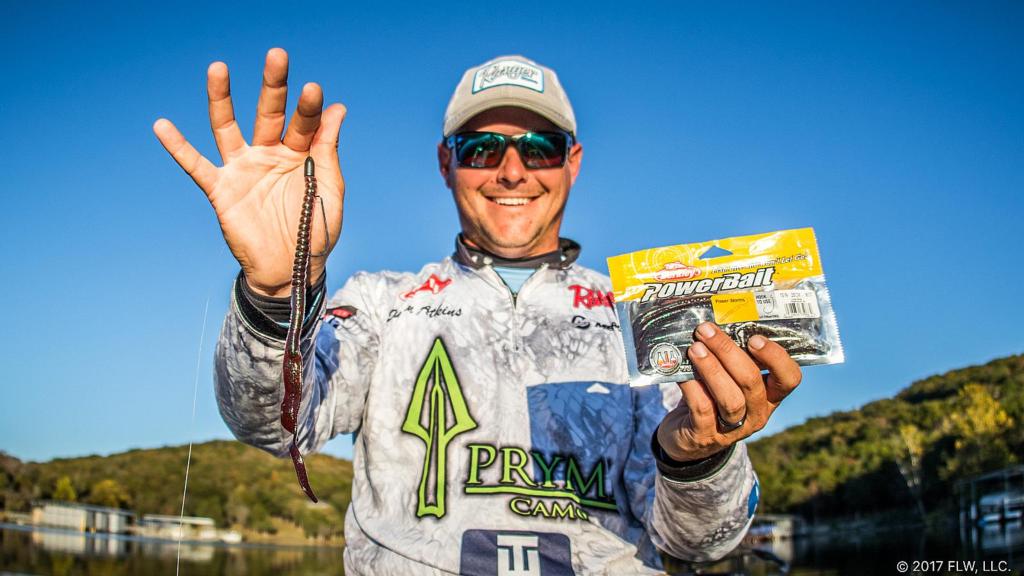Atkins’ Worm Prescription
Sling a worm like the Forrest Wood Cup champ

Fishing a plastic worm is one of the most time-honored ways to catch bass because it flat-out works. This fall Justin Atkins earned his first T-H Marine Bass Fishing League (BFL) win with a worm on Ross Barnett, and big worms account for countless bass throughout the season at all levels of competition. Already established as an essential bait, we figured it’d be good to know exactly how the reigning Forrest Wood Cup fishes a worm.
One of the great things about a worm is how dead-simple it is to fish – you mostly just sling it out and drag it back.
“When I’m targeting brush piles I try to get a good line up, throw it out there and let it go to the bottom,” says Atkins. “Then I just start dragging it until I find the brush and once I find it I really slow it down and maybe shake the rod a bit and give it a little action. I try to bring it over each limb until I get it out of the pile and then I’ll drag it a little bit and reel it in. You can feel when your bait is getting close to an object in the water, and that’s when I really slow it down.”
For grass or open bottoms, Atkins prefers a more uniform pace, simply dragging the worm forward with his rod tip, picking up the slack and repeating the process. Even though you can drag a worm anywhere, Atkins mostly applies it around cover and favors a football or shaky head on cleaner bottom.
“When you’re fishing in grass or brush that big worm will come though without getting hung up and you can be a lot more efficient with it,” says Atkins. “It’s the best way to efficiently cover structure that you don’t need to be getting hung on.”
Atkins always fishes his worm with the weight un-pegged and he has some other guidelines he follows as well.
“On a calm day I’m gonna throw a ¼-ounce in anything less than 7-foot and anything deeper I would throw a 3/8-ounce,” says Atkins. “If it’s windy I throw a 3/8-ounce or if I need to stay back off and make a really long cast. If I’m fishing grass I throw strictly a 3/16-ounce weight because for a lot of your grass fishing the fish are in less than 4 foot of water and you don’t want your weight to bury up in the grass.”
For tackle specifics, Atkins doesn’t do anything too out of the ordinary, but he does always snell his hook to protect the knot from his weight. He currently uses a 7-3 medium-heavy Abu Garcia Fantasista Premier rod matched up with a 7.3:1 Abu Garcia REVO STX and 15- or 20-pound-test Berkley Trilene 100% Fluorocarbon. For a 10-inch worm Atkins likes a 4/0 Berkley Fusion19 worm hook and his go-to is the classic 10-inch Berkley Power Worm. Most of the time Atkins likes a green pumpkin or black color in darker water or around brush, but he loves a red-colored worm like cherry seed or plum around grass.
When it comes to setting the hook on a worm, sometimes you’ll see anglers really wind up on a worm hookset, letting the fish eat it for a bit, but Atkins tries to stay away from that.
“When I feel that bite and I reel down and can feel that fish I immediately set the hook,” says the Alabama pro. “Especially when I’m fishing in brush piles, I like to set the hook as quick as possible before he has time to get around anything. Then I horse him out as quick as I can.”
Though it’s a well-established technique, fishing a worm is still making folks money. If you’re unsure of how to go about it following Atkins advice would be smart, and if you haven’t picked one up in a while you might want to dig a pack out again.